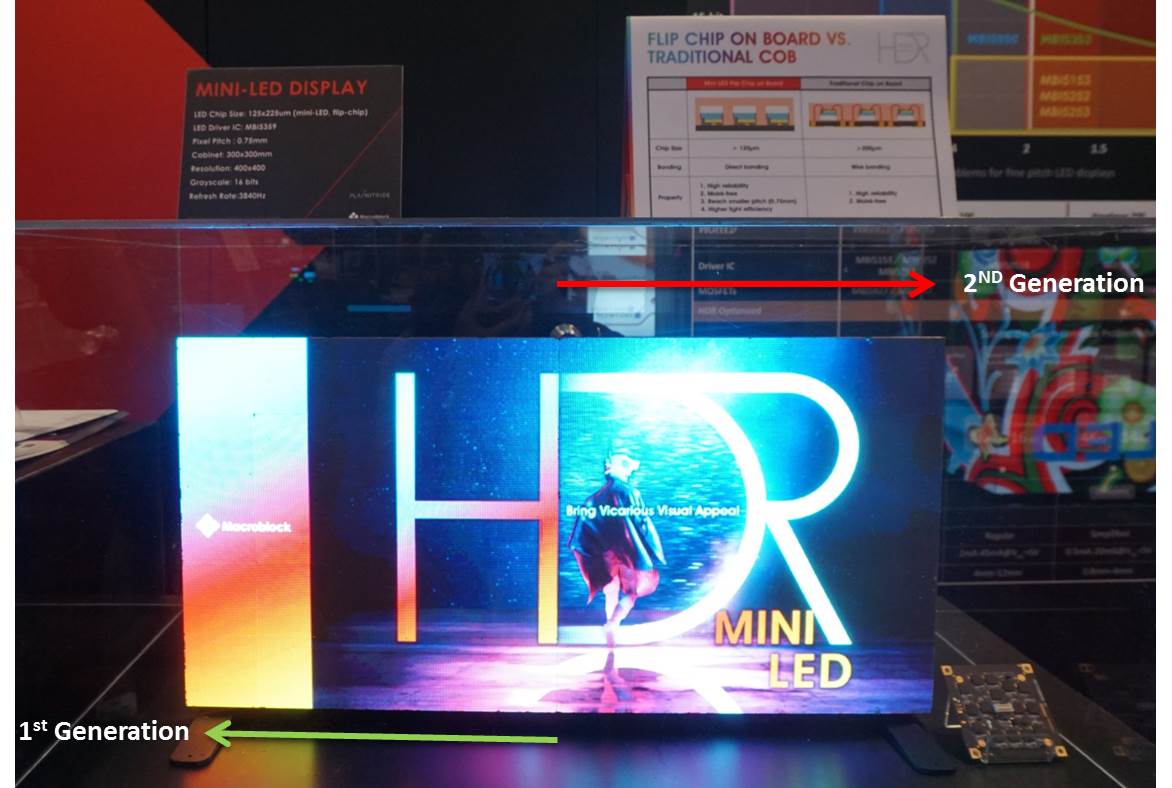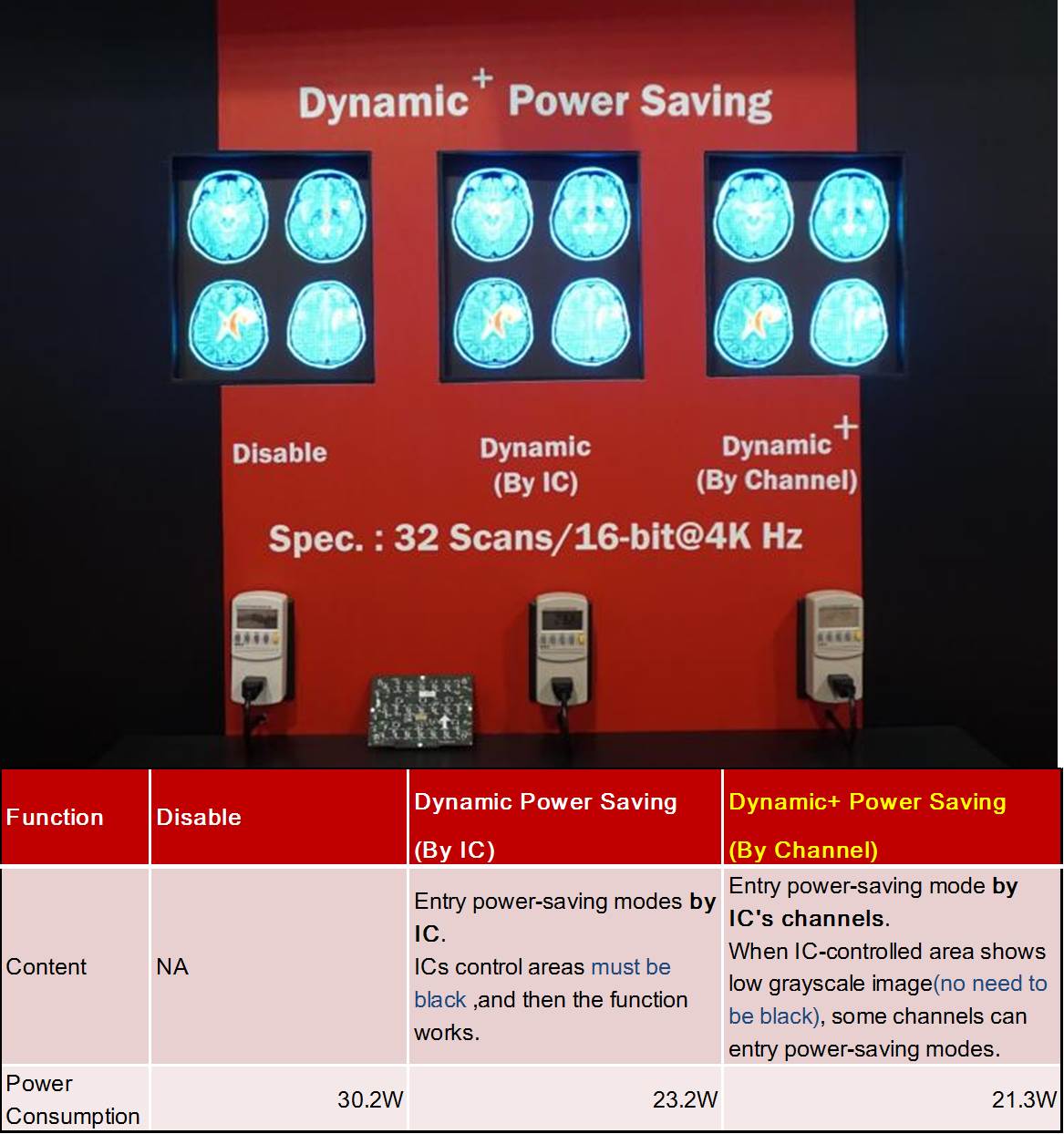CLOSE
Search for “” keywords, total search results
CLOSE
Search for “” keywords, total search results
2018.June



When Las Vegas is mentioned, the image of a vibrant Las Vegas Strip with well-lit buildings and Bellagio’s iconic dancing waters and light show automatically comes to mind. It goes without saying that lights are fundamental in the creation of the landscape along the Strip we see. When Infocomm 2018 is held in Las Vegas this year, Macroblock knows exactly what we have to do: go big or go home. Knowing that aesthetics is all that matters in Vegas, we are taking viewer’s visual experience up a notch, introducing our HDR-Optimized Driver series that is bound to leave visitors of Infocomm astounded and amazed. (Refer to Fig. 1)
HDR-Optimized → True 16-bit@4KHz Realizes HDR (Refer to Fig. 2)
HDR is undoubtedly the most important milestone in the display industry. When speaking of this technology, Macroblock’s General Manager, Robert Chen remarks that our collaboration with Novastar not only realizes HDR on LED displays but also achieves the best display performance—‘HDR-Optimized (true 16-bit @4KHz)’—to demonstrate HDR visual appeal perfectly.
There is a natural difference between HDR and SDR (current general spec.) sources with SDR being an 8-bit input while HDR being at least a 10-bit input. This means the color depth of the same image is 28 and 210 respectively, differing in terms of how fine the segments are. When the input source is upgraded from SDR (8-bit) to HDR (10-bit), we need a higher grayscale output to achieve HDR content value to retain more image details.
At Macroblock’s booth, we compare “General Display Spec. (Input: SDR (8-bit); Output: 14-bit@4KHz)” with “HDR-Optimized (Input: HDR (10-bit); Output: 16-bit@4KHz)”. Visitors can see right away the stark contrast between the two with HDR-Optimized having the ability to retain more image details especially in dark areas while image seen from the General Display Spec. appearing more blurry. HDR-Optimized contains more visual layers, resulting in a more stereoscopic image that helps viewers immerse themselves in the image more easily.
Macroblock’s Product Manager, Alan Tiao remarks, “For LED movie theater applications, HDR is an important feature to bring about a high-level visual experience. HDR allows viewers to immerse in the scene, creating a ‘WOW’ effect. As Macroblock’s HDR-Optimized helps retain more image details and has better contrast, this technology contributes to a better image quality, a technology breakthrough essential for LED usage in movie theaters.”
The 2nd Generation mini LED Cabinet Has a Better Yield Rate and Speeds Up Mass Production Schedule (Refer to Fig. 3 and Table 1)
Partnering with PlayNitride, the 2nd generation mini LED cabinet has progressed significantly as compared to the 1st generation cabinet showcased at ISE 2018. Macroblock’s micro-LED Product Manager, Kerry Huang mentions, “Our mini LED solution features the smallest pixel pitch (P0.75) in the whole industry. Furthermore, the yield rate in the second generation cabinet has greatly improved because of a lower dead pixel rate and a better image uniformity. We are confident that mini LED can enter mass production in the first quarter in 2019.”
According to Table 1, both mini LED (Flip Chip/ Face-Down Chip) and COB (Face-Up Chip) share the properties of high reliability and being Moiré-free. However, only mini LED can be applied to finer pixel pitch products and has a higher light efficiency.
Dynamic+ Power-Saving → Upgraded Smart Power-Saving Function (Refer to Fig. 4)
Power-saving has been a popular topic for many years in the LED display industry. At Infocomm, we use three modules with identical specifications (IC: MBI5359/P0.9376/32S/16-bit@3840Hz) to show the differences in power-saving performance. Macroblock’s Product Manager, Freddy Lo explains, “Dynamic Power-Saving function is controlled by the IC. When the IC-controlled area is completely black, the IC activates this function to decrease power consumption. However, the Dynamic+ Power-Saving function is activated by each channel on the IC. Comparing the extent to which energy is reduced, Dynamic+ Power-Saving function can reduce power consumption by an additional 10%.” As seen, with the Dynamic+ Power-Saving function, displays are no longer limited to showing black images or entering standby modes to save power.
Integrated Brightness Adjustment Module (BAM) and Dynamic Power-Saving (DPS) for Rental Applications
Generally speaking, we use grayscale data to adjust LED display brightness. However, this method causes grayscale loss in the image when shot with a camera, making the picture appear pixelated. Macroblock’s “Brightness Adjustment Module (BAM)” feature overcomes this problem and keeps white balance. We have also added the “Dynamic Power-Saving (DPS)” feature which reduces power consumption by 25% in the demonstration of the BAM feature, allowing visitors to understand this concept.
We sincerely welcome you to visit Macroblock’s booth at Infocomm 2018 to experience a vicarious visual appeal and to learn more about our outstanding HDR visual performance supported by our unparalleled drivers.
Date: June 6 (Wed.)-8 (Fri.)
Venue: Las Vegas Convention Center, Las Vegas, Nevada, USA
Macroblock Booth No.: N1963, North Hall